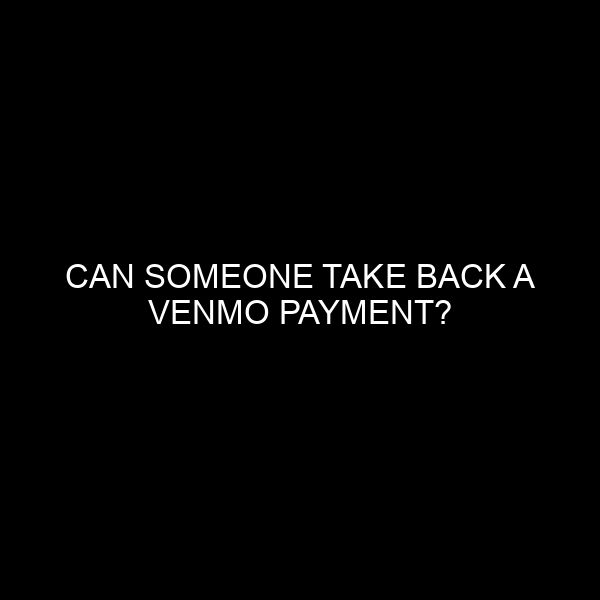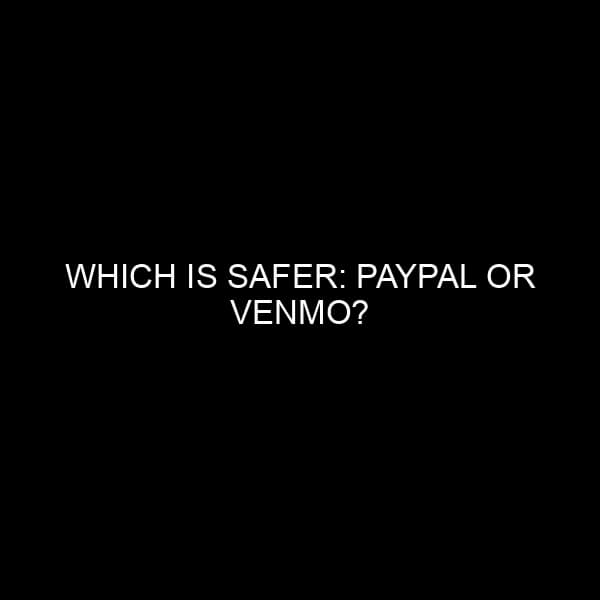Can Someone Take Back a Venmo Payment?
In an age dominated by digital finance and mobile banking, Venmo stands out as one of the most popular peer-to-peer payment platforms. Its user-friendly interface and seamless integration with bank accounts have endeared it to millions worldwide. But, like any financial transaction, mistakes can happen. Whether it’s sending money to the wrong person or simply changing your mind about a payment, the question many users have is, “Can someone take back a Venmo payment?” Drawing from years of experience in the financial market and banking industry, this article seeks to provide an in-depth examination of the processes, policies, and possibilities around reversing a Venmo transaction.
A Deep Dive into Venmo’s Transaction Policies
Before delving into the potential to reverse a payment, it’s essential to understand the fundamental operational philosophy of Venmo. Designed by its parent company, PayPal, Venmo operates on an instantaneous transaction model. This means that once a payment is initiated, it is almost immediately processed and reflected in the recipient’s account.
The Immediate Nature of Venmo Transactions
Unlike traditional banking systems where there might be a holding period for transfers, Venmo is designed for quick peer-to-peer payments. The immediate nature of these transactions is a double-edged sword. On the one hand, it offers convenience; on the other, it poses challenges for reversals.
Can You Cancel a Venmo Payment?
In strict terms, once a Venmo payment is sent, you cannot cancel it from the app or website. However, there are a few caveats to this:
- Pending Payments: If the payment is sent to an email address or phone number not linked to a Venmo account, the status will show as “Pending.” In this case, you have the option to cancel the payment before the recipient signs up and claims it.
- Communicate with the Recipient: If you’ve sent money to the wrong person or want to reverse the payment for any legitimate reason, your best course of action is to reach out to the recipient directly and request them to send the money back. It’s essential to be polite and explain the situation clearly.
- Contact Venmo Support: If the above two methods fail and there’s a genuine reason for seeking a reversal (like a scam or fraud), you can reach out to Venmo’s customer support. While they don’t guarantee a reversal, they can investigate the situation and take appropriate actions if needed.
Venmo’s Stance on Buyer and Seller Protection
An essential aspect to highlight when discussing Venmo reversals is its policy on buyer and seller protection. While platforms like PayPal offer robust protection policies, Venmo’s guidelines are more nuanced. The platform was primarily designed for transactions between friends and family, not commercial exchanges. Therefore, it lacks a comprehensive protection system for buyers and sellers.
However, in recent years, with the rise in popularity of Venmo for business transactions, the company has introduced some measures for seller protection, provided certain conditions are met. Yet, buyers remain at a disadvantage, as there isn’t a straightforward way to dispute transactions, unlike credit card chargebacks.
Tips to Avoid Unwanted Venmo Transactions
To minimize the need for reversals and ensure smooth transactions, consider these tips:
- Double-Check Details: Before hitting send, always confirm the recipient’s details, especially if you’re transacting with them for the first time.
- Use Venmo with Trusted Individuals: Stick to using Venmo with people you trust. For large or commercial transactions, consider platforms with more robust buyer and seller protection.
- Stay Informed: Be aware of common Venmo scams and always be wary of unsolicited payment requests or too-good-to-be-true deals.
Conclusion
While Venmo offers convenience and ease, it comes with its set of challenges, especially concerning transaction reversals. Always approach transactions with caution, double-check details, and ensure you’re informed about potential pitfalls. And remember, while reversing a payment might be challenging, open communication with the recipient can sometimes lead to a positive resolution.






